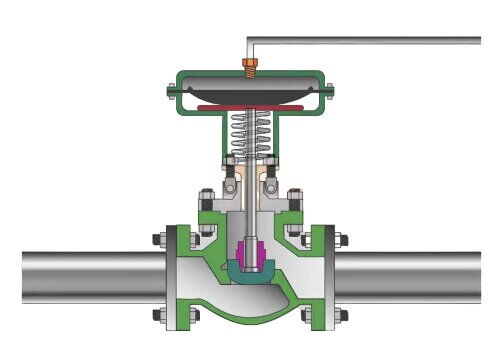Methods for Enhancing Stability in Industrial Control Valves
On this page
In industrial control systems, the stability of control valves is crucial for the system's normal operation. Stability issues can not only affect valve performance but also lead to system oscillations, overshoot, and other adverse consequences. This article explores various methods to enhance control valve stability, ranging from operational mode changes to optimizing valve design, aiming to provide effective solutions for engineers.
Stability analysis reveals that when the closing trend of a control valve aligns with the direction of unbalanced forces, the valve often exhibits poor stability. Switching the valve's operational mode from flow-closed to flow-open can effectively improve stability and mitigate problems caused by unbalanced forces.
Certain control valves may experience stability issues within specific valve positions, such as double-seated valves being prone to instability at higher or lower openings. To ensure stable valve operation, it is advisable to avoid using the valve within these unstable regions.
When selecting control valves, consider their stability characteristics. Valves like sleeve valves, which offer superior stability compared to single-seated or double-seated valves, significantly enhance system stability and reliability. These valves typically feature minimal variations in unbalanced forces and superior guiding designs.
The stiffness of springs in control valve actuators directly impacts their response to load changes. Increasing spring stiffness reduces the impact of load variations on valve stroke, thereby enhancing valve stability. This method is particularly effective in systems requiring precise control.
For systems requiring fine adjustment, overly quick response of control valves can lead to overshoot and oscillation. Adjusting valve characteristic curves (e.g., from linear to logarithmic) or changing actuator types (e.g., from positioners to converters) can lower valve response speed, ensuring stable system operation.
During control valve installation and maintenance, symmetric bolt tightening prevents seal performance degradation caused by uneven bolt forces. Using thinner gaskets effectively reduces deformation and damage to control valve sealing components, thereby extending their lifespan.
For flat-disc valve cores (e.g., in two-position or sleeve valves), widening the seal face effectively reduces valve chatter during closure and minimizes leakage. Maintaining good seal contact enhances valve shut-off performance and operational stability.
Some control valves are prone to flutter in flow-closed states, affecting their normal operation. Adjusting fluid flow direction by switching the valve to flow-open can effectively eliminate flutter and ensure smooth valve operation.
Structural control valves like double-seated valves can suffer from core and seat damage due to fluid shock. Selecting higher hardness guiding materials or optimizing valve designs effectively reduces the impact of fluid shock on control valves, enhancing their lifespan and stability.
In control valves with V-shaped ports, uneven medium flow can generate rotation forces that affect valve operational stability. Adjusting core design angles or adding anti-rotation devices resolves issues caused by rotation forces, ensuring a secure connection between the valve and actuator.
Control valves using soft seals (e.g., O-rings or sealing rings) may experience startup difficulties due to high friction. Balancing friction between the valve plate and seals ensures smooth startup and long-term operational stability.
In summary, implementing measures such as changing unbalanced force direction, avoiding operation in unstable regions, and selecting more stable control valve types significantly enhances stability and reliability. In industrial applications, choosing appropriate control valves and implementing necessary improvements not only reduces operational risks but also enhances system efficiency and long-term stability.

